Having a proper exhaust system in your bathroom is a vital part of its design, particularly if there is no openable window. These fans remove steamy air, preventing it from causing problems like wood rot and mold.
Understanding why bathroom fans let in cold air is the first step to stopping it from happening—and there are definitely steps that you can take to stop it.

Bathroom fans let in cold air when there is no one-way backdraft damper or the damper is not functioning as it should. Outdoor air can enter the house through the ductwork in such cases. Air pressure imbalances can worsen the draft.
Fan Ductwork Gives Outside Air Access to the Inside
When you install a bathroom fan and its ductwork, you are creating a passage leading from the bathroom to the outside.
The air from outside can, therefore, freely access the inside of your house if nothing is done to prevent this from happening.
Factors Increasing the Chance of Air Inflow
The chances of cold air (winter) or hot air (summer) coming into your house through the bathroom fan in a noticeable way depends on a number of factors.
The Length of the Duct Run
Fans with longer duct runs are less likely to experience noticeable inflow of air from the outdoors.
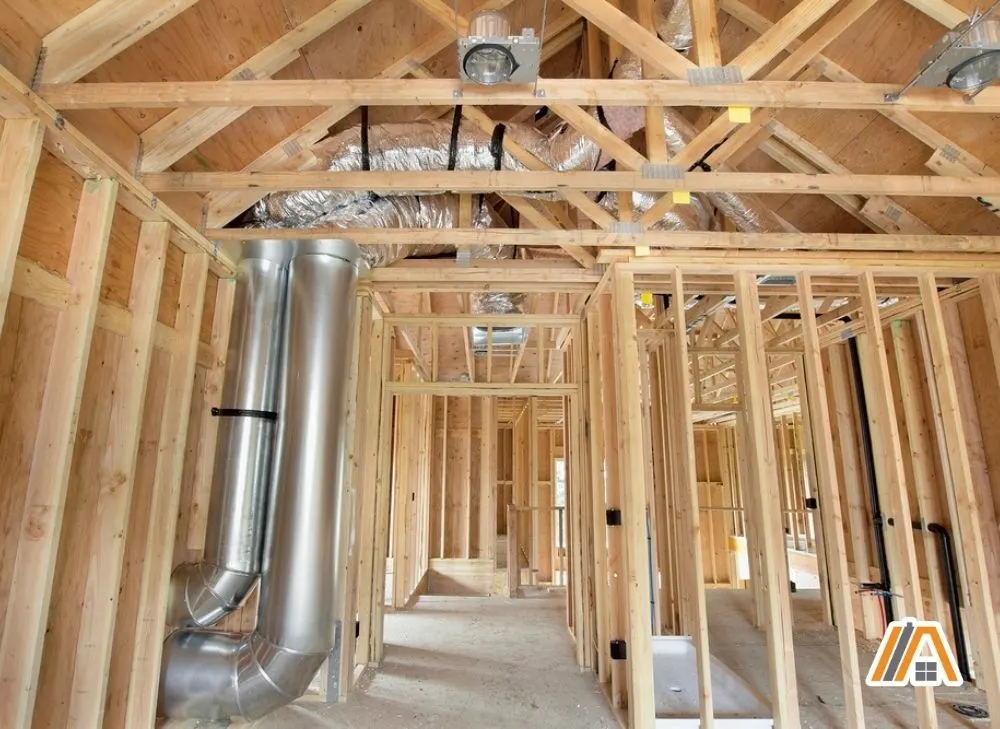
For air entering the ducts to be felt coming out of your bathroom fan, it needs to have a great enough velocity to carry it the whole distance.
Gentler breezes do not have the force to make it all the way through a long run. Even stronger winds might not be able to reach your fan.
In addition, the longer the run, the more elbows and bends it is likely to have. These further slow the air trying to get through from outside.
Fans with shorter duct runs are more likely to experience noticeable inflow of air from the outdoors because they are simply closer to the outside. Moreover, there are going to be fewer bends to slow the air trying to come in.
Air entering the duct has less distance to travel, so even with lower velocities, it can make it far enough to enter your home. Moreover, there are going to be fewer turns and joins, which could slow the air.
Strength and Direction of the Wind
As the ability of outside air to enter the home through the bathroom fan relies on it having enough energy to make it to the fan, the faster the wind is moving, the further it will go.
However, the influence of the strength of the wind is dependent on the direction in which the wind is blowing in relation to the location of the external vent.
Bathroom fans can vent through the roof, the side of the house, or the soffit.
When they vent through the roof, they are quite exposed to the effects of wind blowing from almost every direction.
Sidewall vents are very susceptible to wind blowing against that wall of the house, but very sheltered from wind originating in the opposite direction.
Soffit vents are the most protected from the effects of wind blowing from most directions. However, if the wind blows in just the right direction, the eaves sheltering the soffit act like a funnel, helping to push the air in through the external vent.
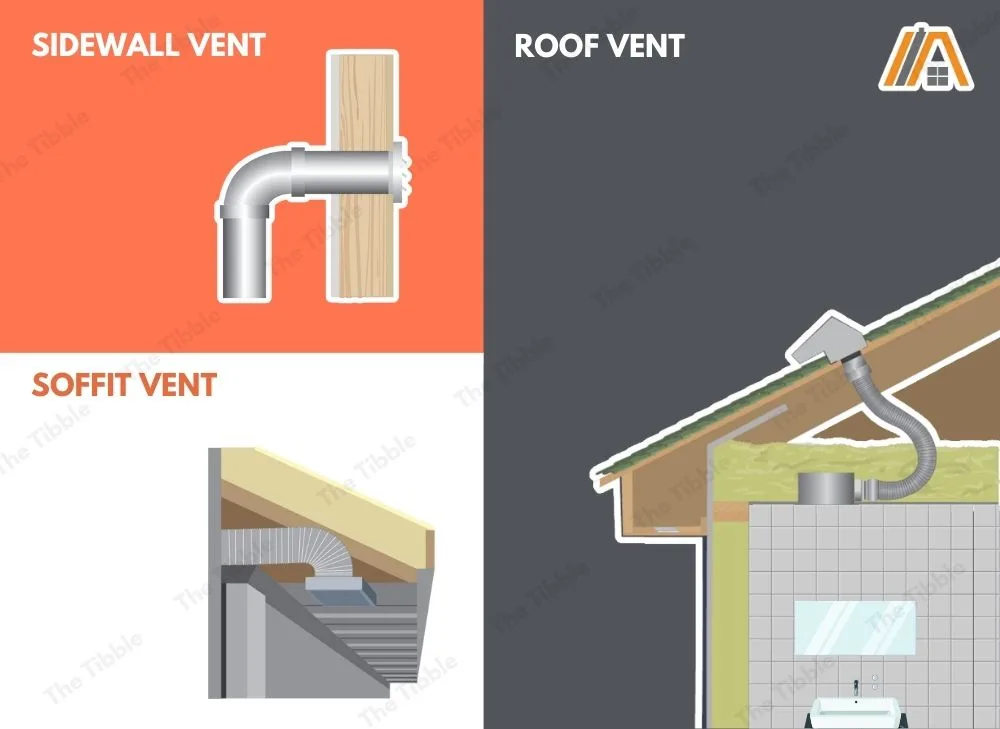
Air Pressure Indoors
Air pressures inside the house can play a role in cold or warm breezes entering the bathroom through the fan.
Ventilation systems have to be carefully designed and sized to ensure that they don’t remove too much air from the house compared to how much can get in to replace this exhausted air.
If the rate of exhaustion is too high, then the air pressure drops indoors in relation to environmental air pressure.
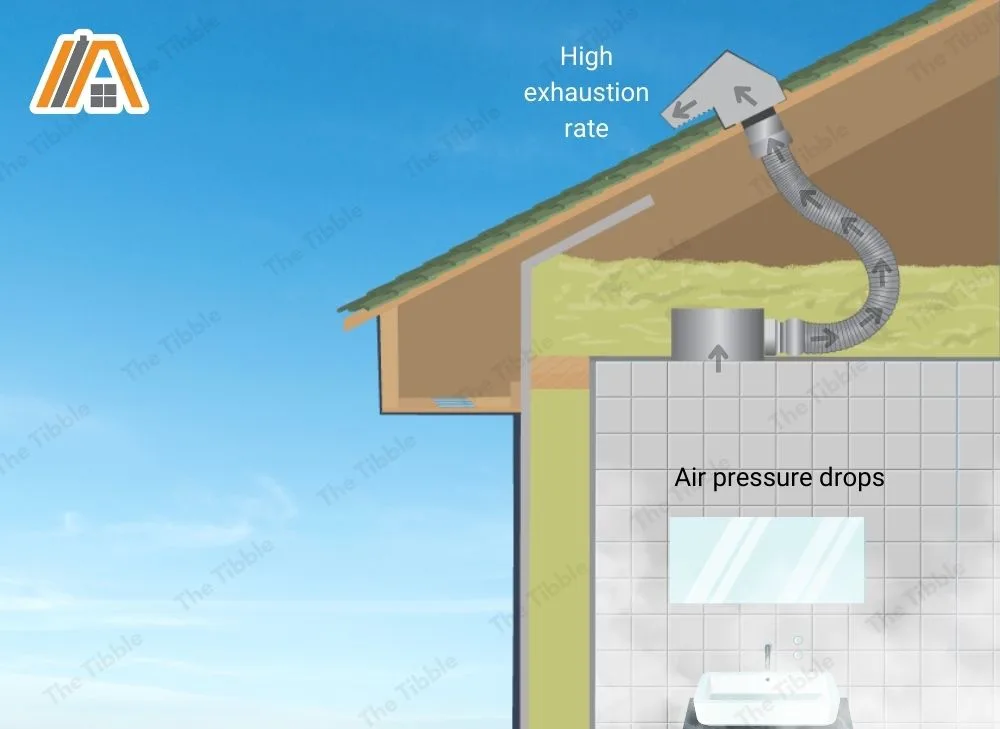
The result of this is movement down a pressure gradient, so air is pulled into the house through any route available, including the fan’s ductwork.
The extent of air inflow as a result of negative air pressure also depends on how long the duct run is with longer ducts being less likely pull in noticeable drafts of air. Air within the ducts can be pulled out, but it will typically take too long for the outside air (significantly hotter/colder) to reach the bathroom fan.
Before this happens, the air balance is likely to stabilize, particularly because the bathroom ductwork is not the only route for replacement or makeup air to enter the bathroom.
Typically, bathroom fans do not warrant the provision of makeup air. However, sometimes, it can be a cumulative effect. For example, bathrooms next to kitchens can also be affected by range hoods, which also exhaust air from the house.
Additionally, a very airtight house is more susceptible to the formation of negative air pressure.
The Presence of Backdraft Dampers
Finally, and most importantly, is the presence or absence of backdraft dampers.
These are devices inserted into the ductwork that have flaps that only open in one direction.
You can install backdraft dampers just behind the bathroom fan, somewhere along the run as an in-line installation, or at the terminal vent.
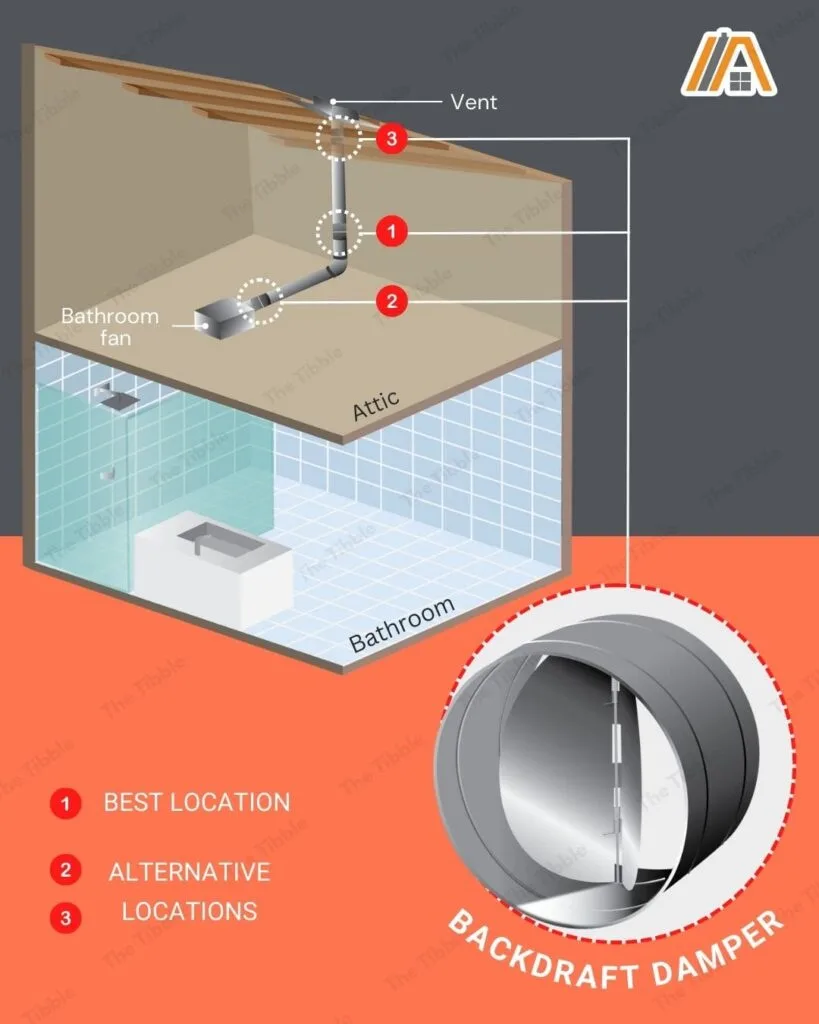
The flaps are pushed open under the pressure from the air being exhausted by the fan (gravity- and spring-operated mechanisms). They can also be opened electrically when the fan is turned on.
However it happens, the air is only able to travel out. The flaps cannot swing in the opposite direction, so if the damper is functioning as it should, outside air should not be able to be make it through the fan.
The other factors are, for the most part, eliminated by the presence of a backdraft damper. However, if the damper’s function is compromised, they come back into play.
No Backdraft Damper to Stop Outside Air
So, backdraft dampers are excellent at stopping that cold/hot draft from ruining your carefully balanced indoor temperature.
However, backdraft dampers are not required by the building codes for bathroom fan ventilation systems.
This means that your new house might not have one even if your old house did, which is why you never had a problem with these drafts before you moved.
It also means that if your house was constructed as part of a mass building project, the contractors might have skipped this non-mandatory addition.
If you don’t have a backdraft damper, then you should install one.
I can recommend AC Infinity. They offer a range of sizes for round ducts as well as a rubber seal to make the fit airtight.
- An antidraft duct insert designed for use with range hoods, bathroom fans and other home HVAC applications.
- Features outer rubber gaskets that create an airtight seal and grip between the damper and ducts.
- Mounts horizontally or vertically to prevent backflow and debris from entering ducting.
- Galvanized steel body with spring-loaded aluminum damper blades that open with minimal airflow.
- An antidraft duct insert designed for use with range hoods, bathroom fans and other home HVAC applications.
- Features outer rubber gaskets that create an airtight seal and grip between the damper and ducts.
- Mounts horizontally or vertically to prevent backflow and debris from entering ducting.
- Galvanized steel body with spring-loaded aluminum damper blades that open with minimal airflow.
- An antidraft duct insert designed for use with range hoods, bathroom fans and other home HVAC applications.
- Features outer rubber gaskets that create an airtight seal and grip between the damper and ducts.
- Mounts horizontally or vertically to prevent backflow and debris from entering ducting.
- Galvanized steel body with spring-loaded aluminum damper blades that open with minimal airflow.
Last update on 2024-03-27 / Affiliate links / Images from Amazon Product Advertising API
Gravity-operated dampers can get very noisy when it’s windy outside and they tend to leak more readily when not installed at the correct angle. Electrically-operated dampers have more components that can go wrong.
This is why I prefer spring-loaded backdraft dampers.
Backdraft Damper Not Working
The flaps and frame of backdraft dampers can warp, crack, or chip.
The springs of spring-loaders dampers and electronic components of electronically-operated dampers can fail as a result of damage, fault, or normal wear and tear.
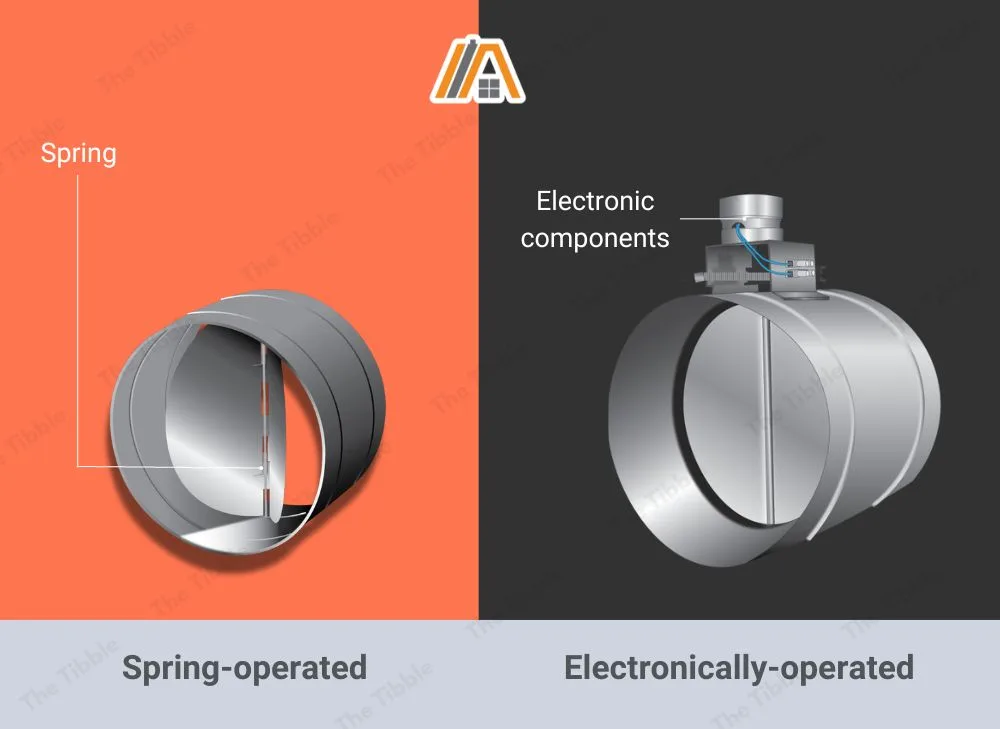
If the backdraft is damaged in these ways, then it must be replaced.
Gravity-operated damper flaps can readily be picked up and dropped by the wind, particularly if located at the external vent. Not only does this allow wind into the ducts, but it also creates a banging noise.
In these cases, you can solve the problem without replacing the damper. Simply weigh the flaps down enough that the wind cannot pick them up.
- Superior Quality – High quality material is garanteed, close tolerance make sure the weight of the products are accurate.
- Anti-Corrosion – The surface layer of the wheel weights is first electrogalvanized, then apply multilayer and omni-dimension plastic spraying process.
- Eco-Friendly – The material of the products is lead-free, universal for 50 states.
- U.S White Tape – U.S made Four-Season Tape makes the perfect sticking results, wide paper backing disigned for easy peeling.
Last update on 2024-03-27 / Affiliate links / Images from Amazon Product Advertising API
Don’t add too much weight, though, as this will stop the flaps from opening as they should and allow steamy bathroom air out.
If you don’t want to buy wheel weights or they are too heavy for your damper, then you can try sticking an appropriately-sized washer onto the flap with silicone.
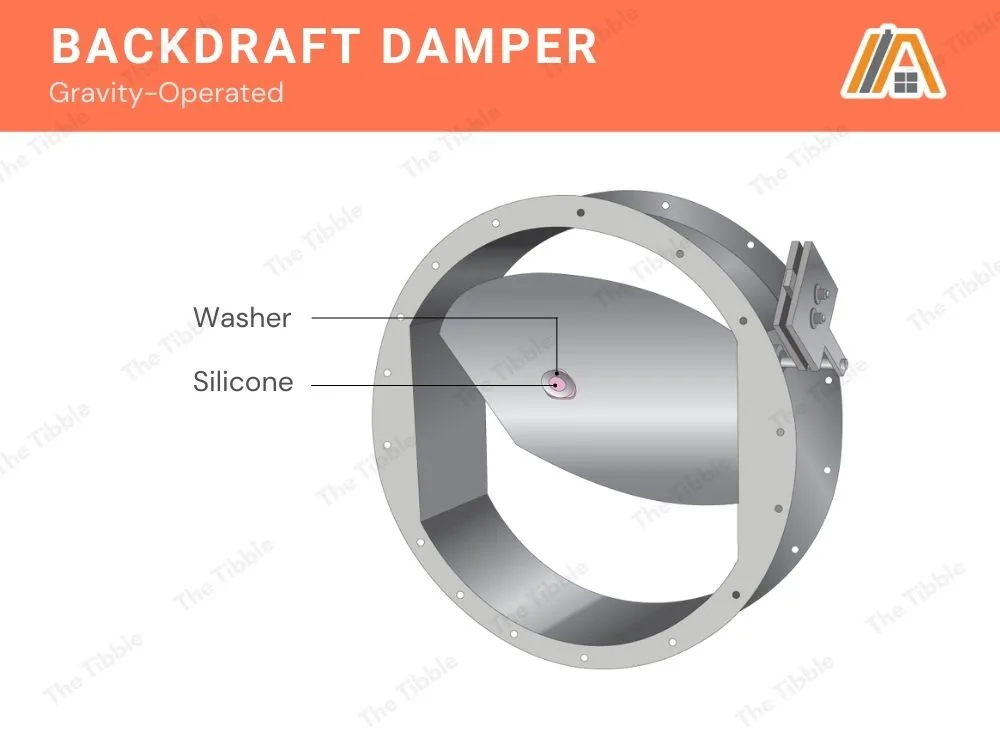
Sometimes, the flaps can just get stuck open. Dirt, carcasses of small animals, animal nests, debris, etc., can all stop the flaps from closing while the fan is not in use.
To solve this, you just need to clean away the blockage.
You can also take steps to prevent it from happening again, i.e., you can install screens or hoods over the external vent. Cleaning your ducts regularly can also help.
Air Entering From Around the Fan
Sometimes, the air is not actually coming from the ducts behind the bathroom fan. Instead, it is seeping around the fan insert.
Air can enter the walls and ceilings of homes. Usually, it is stopped by the insulation in these locations.
However, if there are gaps in the insulation, then air can flow into the house from behind the walls and ceilings through any spaces, cracks, etc.
The hole into which the bathroom fan is inserted is one such space.
The leak will be most noticeable when another exhaust fan, such as a range hood, is running in the house. The area behind the fan becomes a source of replacement air for that which is exhausted by the range hood.
To solve this, you can air seal around the bathroom exhaust fan.
Air Seal Bathroom Exhaust Fan
Caulk (amazon link) is used to air seal the connection.
Sealing the fan/ceiling connection is also an effective way to prevent moist bathroom air from causing any problems in the attic or walls.
Excess moisture in the attic will condensate on cold surfaces and eventually cause mold and other moisture related problems.
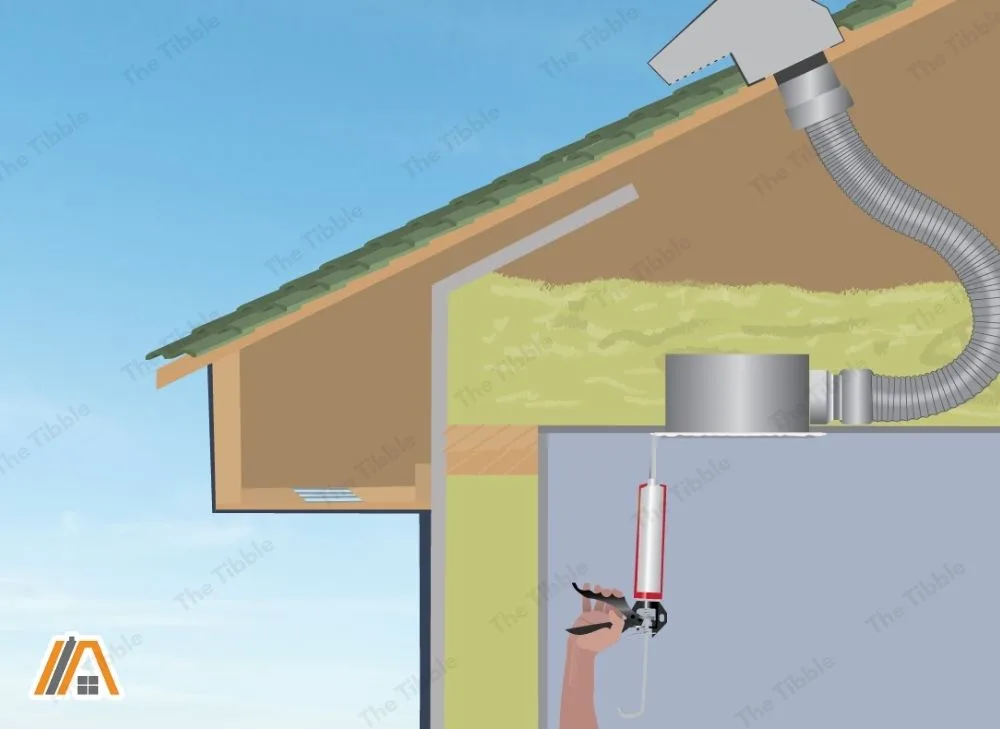
Installing Your Back-Draft Damper
Regardless of which model you pick up, it should come with a fairly standard set of directions that can help you through the installation process with great accuracy.
However, you can use this section as a general guide of the important aspects of the installation and what to expect.
This is an instruction for the external damper. I would however suggest installing a secondary internal damper as well.
Measure
You’ll want to measure out how far your damper should be away from the fan’s terminal discharge point. As a rule of thumb, this should be about half the diameter of the duct.
Choose the Correct Orientation
The damper only works if it is installed in the correct orientation. The flaps must open outward.
On top of this, gravity-operated flaps will function best when the flap opens upwards and not to the side (however, you should follow the instructions for the actual damper in this regard).
Install Square With the Duct
The damper needs to be installed in a square orientation. It should not be jammed in at an angle.
This would affect the operation of the flaps but also potentially create gaps around the damper through which air can backdraft.
Prevent Frame Distortion
During the installation process, the frame for the backdraft damper could potentially become distorted through compression or other such pressures.
Luckily, there is an easy way to prevent this. Simply use shims between the frame and the duct opening. These shims prevent the fasteners from altering the frame’s shape as it is braced in place.
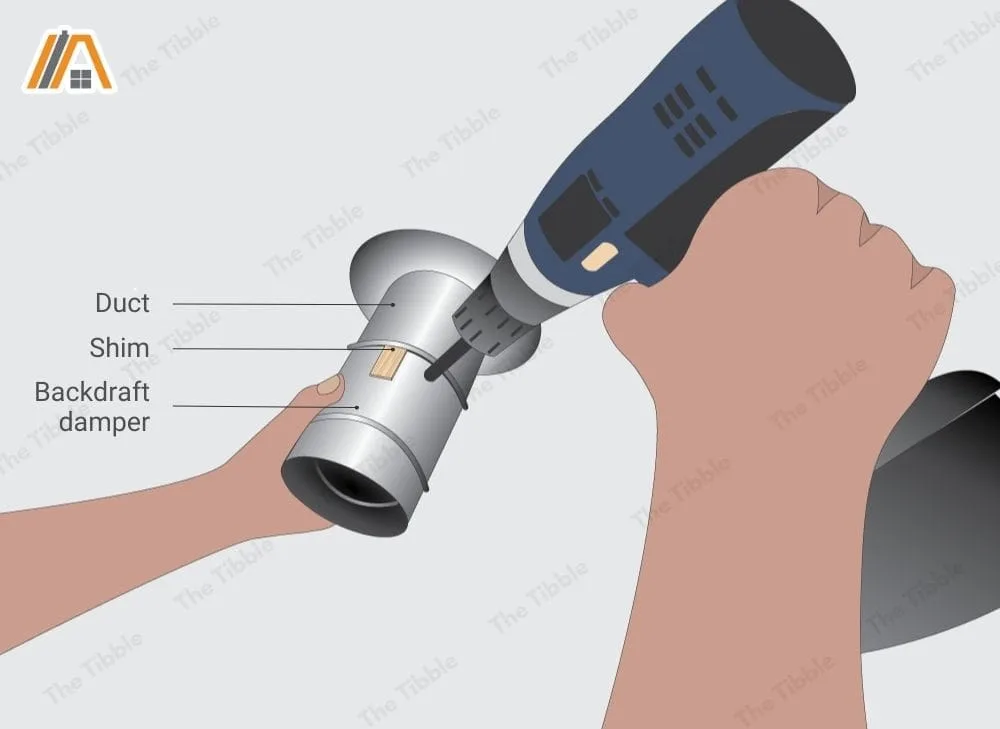
Cycle All Dampers
Upon installation, one last important piece to ensure correct operation is to cycle the system to stop the damper’s linkages, axles, and blades from binding. Simply put, run the bathroom fan for a few minutes after installation.
NCA has published a basic guide containing everything you might need regarding backdraft damper installation. It gets into the technical side of the process and provides different considerations for single or multi section setups.




